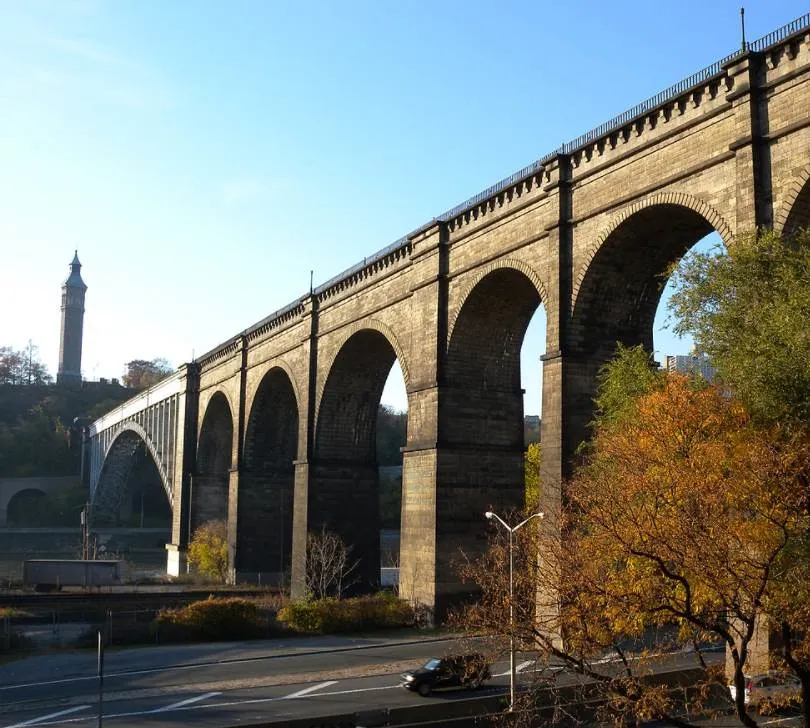If you ever plan to visit New York City, then you’ll most definitely come across some of the city’s most amazing bridges. These structures not only look amazing but have helped to grow New York into one of the biggest metropolitan areas in the world.
Apart from serving their purpose as a means to cross the rivers that flow through the Big Apple, they have also become popular buildings in NYC in their own right.
Let’s take a closer look at some of the most famous bridges in New York City, structures that not only carry vehicles but also a lot of history as well.
1. Brooklyn Bridge
The Brooklyn Bridge is without a doubt the most iconic of all the famous bridges in New York City. This cable-stayed suspension bridge spans the East River and connects the 2 New York boroughs Brooklyn and Manhattan, not too far from the main financial district of the city.
The construction of this National Historic Landmark in the city started way back in 1870 and wasn’t completed until the year 1883. This also means that it was the longest suspension bridge in the world upon completion with the main span measuring 1,595.5 feet (486.3 meters).

2. Manhattan Bridge
The Manhattan Bridge is located just north of the Brooklyn bridge which means it crosses the same New York City boroughs. The bridge was constructed between 1901 and 1909 to a revolutionary design by one of the most renowned suspension bridge engineers of the 20th century, Leon Moisseiff (1872-1943).
Even though its iconic neighbor just south is arguably the most famous one, the Manhattan Bridge can be described as the most influential one. Engineer Moisseiff integrated a technique that allowed for a much lighter version to be built, saving both time and money.
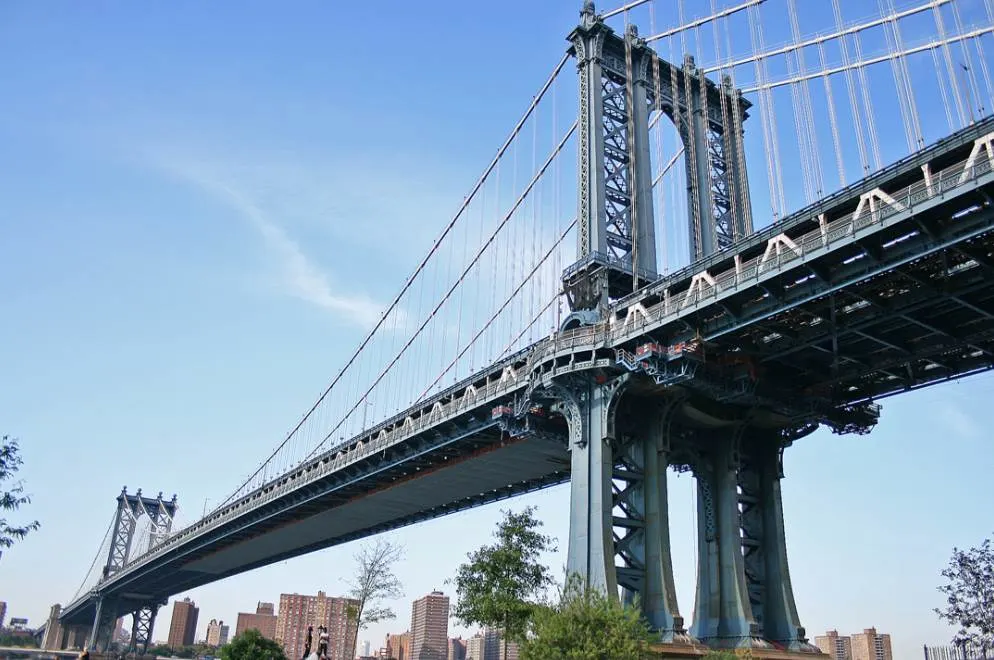
3. George Washington Bridge
The George Washington Bridge spans the Hudson River and connects the northwestern part of Manhattan with the New Jersey borough of Fort Lee. It was named after the first American President and is considered to be the busiest motor vehicle bridge in the world, carrying well over 100 million vehicles across every year.
The construction of this bridge was started in 1927 and it opened with a single deck in 1931. Due to increased traffic, an additional deck was added which was completed in 1962. This was yet another bridge that held the record of the longest span in the world at 3,500 feet (1,067 meters). It held this record until the completion of the Golden Gate Bridge in San Francisco in 1937.

4. Hell Gate Bridge

The Hell Gate Bridge can be described as having the most distinctive design of all famous bridges in New York City. It carries rail traffic across the Hell Gate, a strait of the Hudson River. By doing so, it connects the Astoria neighborhood in Queens with the Randalls and Wards Islands in Manhattan.
The structure has a length of 1,017 feet (310 meters) and was completed between 1912 and 1917. The distinctive tied-arch design of the bridge formed the inspiration for both the Tyne Bridge in Newcastle Upon Tyne, England and the Sydney Harbour Bridge in Sydney, Australia.

5. Verrazzano-Narrows Bridge
The Verrazzano-Narrows Bridge is locally known as either the “Verrazanno” or simply the “Narrows.” It crosses the Narrows, a strait south of Manhattan, and connects the New York City boroughs of Staten Island and Brooklyn.
It was named after a 16th-century European explorer named Giovanni da Verrazzano who was the first to enter New York Harbor and the Hudson River in 1524. You guessed it right, this bridge also held the record of being the longest suspension bridge in the world with a span of 4,260 feet (1,300 meters) upon completion in 1964.

6. Williamsburg Bridge
The Williamsburg Bridge is an extremely robust suspension bridge that crosses the East River. It connects the Lower East Side of Manhattan and the Williamsburg neighborhood of Brooklyn and was completed between 1896 and 1903.
The longest span of this immense bridge has a length of 1,600 feet (490 meters). We’re not joking because it also held the record as the longest suspension bridge in the world between 1903 and 1924. It took the record from the Brooklyn Bridge and lost it to the Bear Mountain Bridge in New York State.
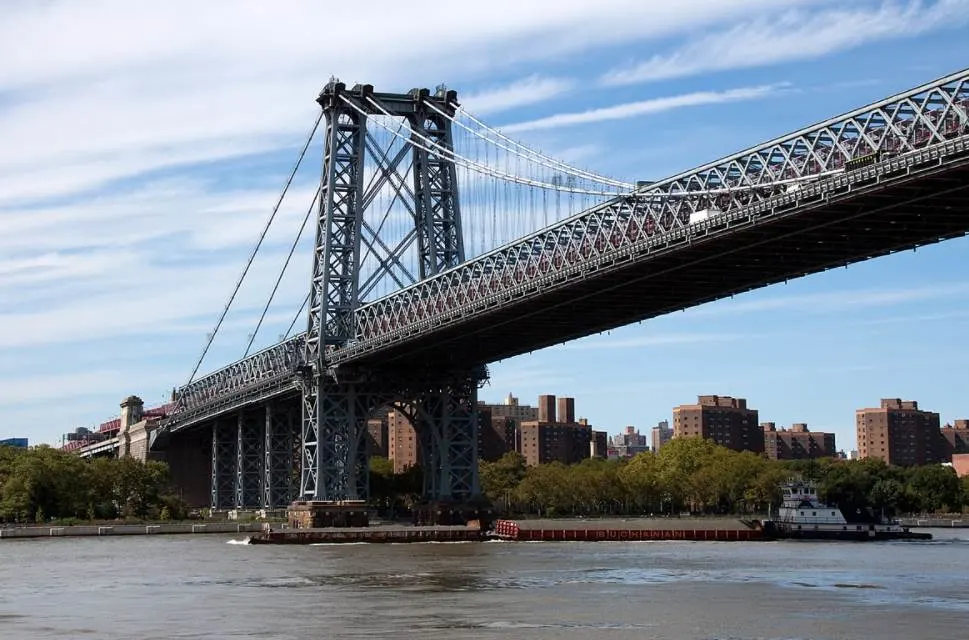
7. Ed Koch Queensboro Bridge
The Ed Koch Queensboro Bridge is often just referred to as the “Queensboro Bridge” and connects the Long Island neighborhood in Queens with the Upper East Side of Manhattan. This magnificent cantilevered bridge is another historic bridge in New York City that was completed between 1902 and 1909.
This particular bridge is also sometimes referred to as the “59th Street Bridge” because this is the street where it ends in Manhattan. 59th Street is famous for passing by the southern end of the iconic Central Park. The bridge was named in honor of Ed Koch (1924-2013), the mayor of New York City between 1978 and 1989.
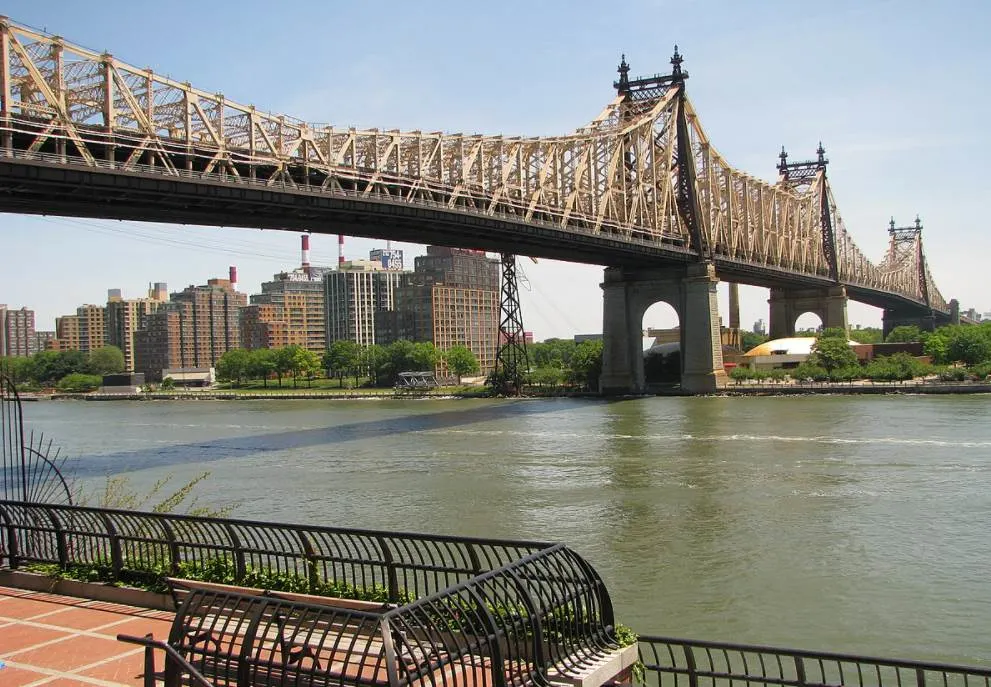
8. Robert F. Kennedy Bridge
The Robert F. Kennedy Bridge is another iconic bridge in New York City that was named after a famous politician. It’s still mostly referred to as the Triborough Bridge and is remarkable because it connects 3 of the 5 New York City boroughs, Manhattan, Queens, and the Bronx.
Apart from this interesting notion, it also provides amazing panoramic views of the city and is magnificently illuminated at night. This complex of bridges was completed in 1936 and this amazing structure became a National Historic Civil Engineering Landmark in 1986.
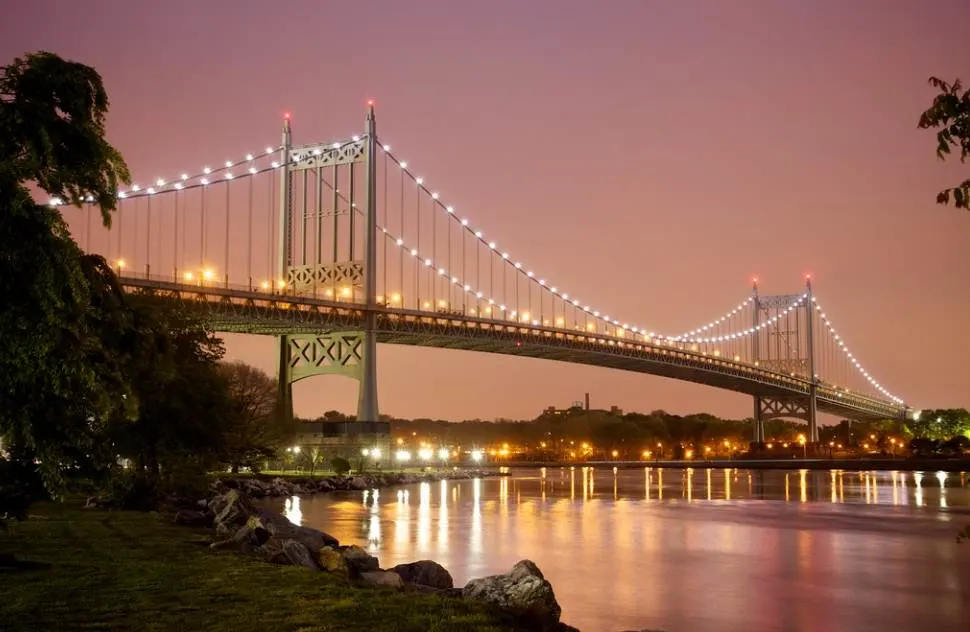
9. Throgs Neck Bridge
The Throgs Neck Bridge is the newest bridge that spans the East River, even though it opened way back in 1961. It connects the Throggs Neck neighborhood of the Bronx in the north with the Bay Terrace neighborhood of Queens in the south.
It’s one of the multiple bridges that was designed by renowned structural engineer Othmar Ammann (1879-1965), a man who also designed the George Washington, Triborough, and Verrazzano-Narrows bridges in New York City. It was the easiest for him because he didn’t have to keep maritime traffic in mind for this one.
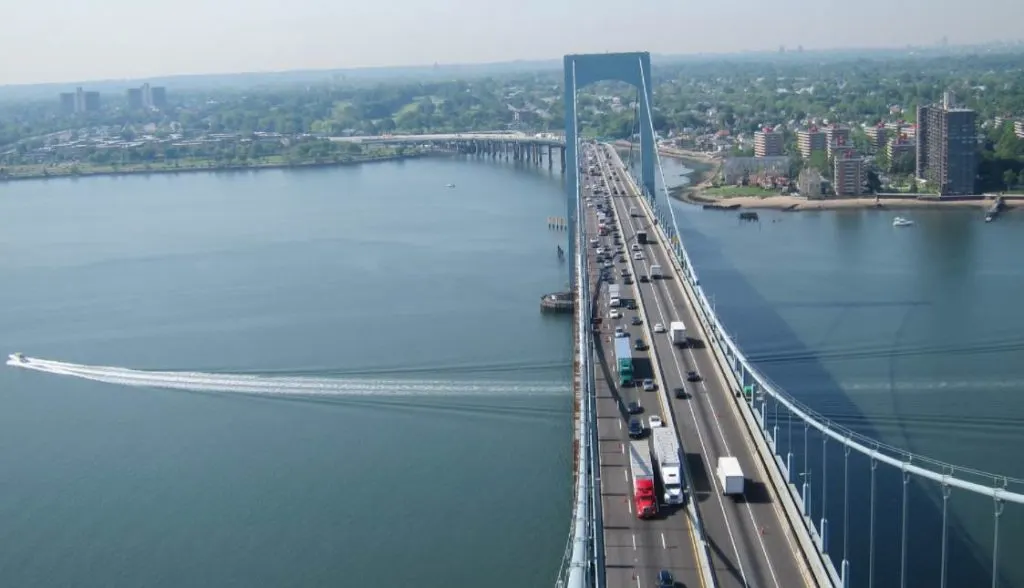
10. The High Bridge
The High Bridge is the oldest in New York City, even though it merely served its purpose as a part of the Croton Aqueduct. This complex of aqueducts brought water to the city by gravity, just like how water was supplied back in ancient Roman times.
The bridge was completed in 1848 and crosses the Harlem River, connecting the boroughs of Manhattan and the Bronx. The bridge originally featured 16 stone arches but the 5 crossing the river were replaced by a single steel structure in 1925. The bridge was completely renovated recently and opened as a pedestrian crossing in 2015.
